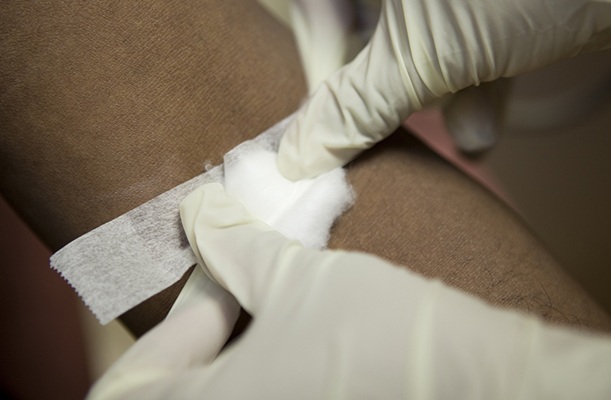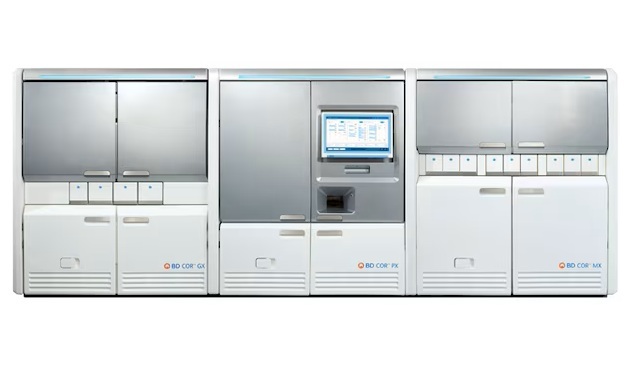Gene Signature Identifies Patients with Long-term Lyme Disease
Posted on 16 Nov 2022
A transcriptomics approach was used to establish a 35-gene signature that could be used to identify individuals with long-term Lyme disease and distinguish them from those with the acute form of Lyme disease and from healthy individuals.
Lyme disease is a tick-borne illness caused by the spirochete Borrelia burgdorferi, which is not well understood. While most patients are diagnosed and treated with antibiotics at the earliest stages of Lyme disease, about 20% of patients develop long-term complications, which could include arthritis, neurological symptoms, and/or heart problems.
![Image: Dark field photomicrograph (magnified 400X) showing the spirochetes, or corkscrew-shaped bacteria, known as Borrelia burgdorferi, which is the pathogen responsible for causing Lyme disease (Photo courtesy of [U.S.] Centers for Disease Control and Prevention) Image: Dark field photomicrograph (magnified 400X) showing the spirochetes, or corkscrew-shaped bacteria, known as Borrelia burgdorferi, which is the pathogen responsible for causing Lyme disease (Photo courtesy of [U.S.] Centers for Disease Control and Prevention)](https://globetechcdn.com/mobile_labmedica/images/stories/articles/article_images/2022-11-16/GMS-294795373.jpg)
Testing and diagnosis of the earliest stages of Lyme disease have proven to be difficult or unreliable. The universally accepted diagnostic test is a positive enzyme-linked immunosorbent assay (ELISA) followed by a positive western blot for immunoglobulin M (IgM) and IgG, referred to as the two-tier test (TTT). The TTT test has a sensitivity of 17-43% during the early stage of infection. In the absence of a laboratory diagnostic tool, the diagnosis of early Lyme disease is reliant on clinical demonstration of the erythema migrans (EM) skin lesion that occasionally does not present or is not observed. This can lead affected individuals to progress to early disseminated or late-stage disease, which can have more difficult-to-treat symptoms, before the disease is diagnosed and treated with antibiotics.
To further the understanding of the molecular mechanisms that may contribute to post-treatment Lyme disease symptoms and to identify reliable biomarkers for the diagnosis of post-treatment Lyme disease, investigators at the Mount Sinai School of Medicine (New York, NY, USA) examined the transcriptional profiles of peripheral blood mononuclear cells (PBMCs) isolated from 152 individuals with post-treatment Lyme disease and compared these profiles to those from 72 individuals with acute Lyme disease and 44 uninfected healthy control participants.
Transcriptomics technologies are the techniques used to study an organism's transcriptome, the sum of all of its RNA transcripts. These include the mRNA, rRNA, tRNA, and other non-coding RNAs produced in one or a population of cells. A transcriptome captures a snapshot in time of the total transcripts present in a cell. Transcriptomics technologies provide a broad account of which cellular processes are active and which are dormant.
Initial results of the current study revealed differences in gene expression and showed that most of the post-treatment Lyme disease patients had a distinctive inflammatory signature compared with the acute Lyme disease group. By analyzing the differentially expressed genes together with genes that were differentially expressed due to other infections (from other published studies), the researchers were able to identify a subset of 35 genes that were highly expressed.
“We wanted to understand whether there is a specific immune response that can be detected in the blood of patients with long-term Lyme disease to develop better diagnostics for this debilitating disease. There still remains a critical unmet need, as this disease so often goes undiagnosed or misdiagnosed,” said senior author Dr. Avi Ma’ayan, professor of pharmacological sciences at the Mount Sinai School of Medicine. “Not enough is understood about the molecular mechanisms of long-term Lyme disease.”
“We should not underestimate the value of using omics technologies, including transcriptomics, to measure RNA levels to detect the presence of many complex diseases, like Lyme disease. A diagnostic for Lyme disease may not be a panacea but could represent meaningful progress toward a more reliable diagnosis and, as a result, potentially better management of this disease,” said Dr. Ma’ayan.
The transcriptomics study was published in the November 15, 2022 online edition of the journal Cell Reports Medicine.
Related Links:
Mount Sinai School of Medicine















